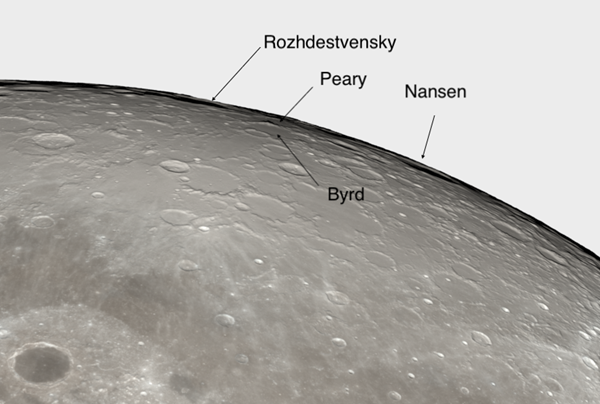Thursday, July 22
From our Earthbound perspective, the Moon appears to bob up and down across the ecliptic (the plane of the solar system) as it orbits our planet. That means sometimes, we get a better view of its northern or southern polar regions, depending on our perspective. Today, the Moon hits its lowest point — called a northern libration — giving us more of a top-down view than usual. The angle reveals a swath of terrain near the pole, including craters such as Rozhdestvensky, which sits at 87° latitude on the farside. Other craters on view include Nansen, Peary, and Byrd.
A small telescope is enough to net you this bird’s-eye view; higher magnification will cut down on the amount of light you’re getting, which will help to dim our satellite’s bright glow. If you aren’t able to observe tonight, don’t worry — you’ll get another chance next month, when the bobbing motion once again coincides with the Full Moon.
Sunrise: 5:50 A.M.
Sunset: 8:23 P.M.
Moonrise: 7:42 P.M.
Moonset: 3:51 A.M.
Moon Phase: Waxing gibbous (97%)
Friday, July 23
Full Moon occurs at 10:37 P.M. EDT. Our satellite rises about two hours earlier, shortly after the Sun sinks below the horizon. That means you’ll see the Moon rising amid Earth’s shadow, which also rises as the Sun moves behind the curvature of our planet.
The shadow is visible as a dark band of sky near the horizon and typically sits beneath a brighter band or arch of pinkish-orange sky, known as the Belt of Venus, which separates it from the still-blue sky above. This pink glow is caused by scattered sunlight, as particles in the atmosphere preferentially scatter longer (redder) wavelengths — the same reason the sunrise or sunset is red.
You can see both Earth’s shadow and the Belt of Venus either after sunset or before sunrise, opposite the location of the setting or rising Sun in the sky.
Sunrise: 5:51 A.M.
Sunset: 8:22 P.M.
Moonrise: 8:36 P.M.
Moonset: 4:56 A.M.
Moon Phase: Full










